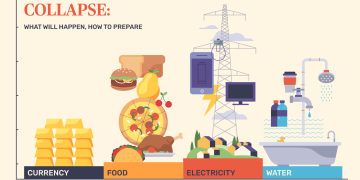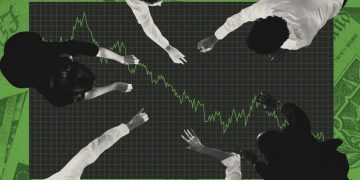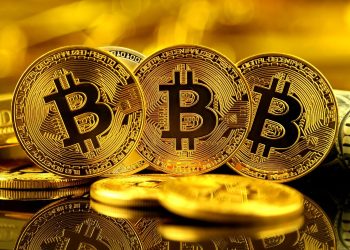The global economy has spent the past half-decade navigating a minefield of trade disputes — from U.S.–China tariffs to EU tech regulations, semiconductor export bans, and cross-border digital service taxes. These frictions sent shockwaves through capital markets, supply chains, and investment strategies, often forcing investors to play defense.
But as trade tensions show signs of easing in mid-2025, from renewed multilateral dialogues to the rollback of select tariffs and regulatory harmonization in key sectors, global capital is no longer just reacting to risk — it’s pivoting toward opportunity.
So where is the capital going now that the worst of the trade war rhetoric has cooled? This article dives deep into the sectors and markets that are emerging as early beneficiaries of trade normalization, and how investors are positioning for the next phase of global economic realignment.
I. Signs of Thawing Trade Tensions: What’s Actually Changing?
1. U.S.–China Reengagement
- Several 2025 high-level summits led to limited but symbolic tariff removals, especially on intermediate goods (electronics components, agricultural tech, clean energy equipment).
- A new bilateral trade framework on AI, rare earths, and pharmaceuticals is being explored.
- Channels for dispute resolution have reopened, bringing more predictability for multinationals.
2. EU–U.S. Tech Coordination
- Agreements to align digital taxation and data regulation frameworks have eased uncertainty for U.S. and EU tech giants.
- A draft transatlantic semiconductor pact is in discussion to counter supply chain fragmentation.
3. Asia-Pacific Trade Normalization
- Within RCEP and CPTPP, several member states are accelerating tariff phase-outs and digital trade protocols, boosting intra-Asia flows.
- Japan and South Korea have resumed high-tech component exports to China and Southeast Asia after prior licensing freezes.
These shifts have created new momentum for cross-border capital — especially into geographies and sectors that were previously sidelined or constrained by uncertainty.
II. Where Is Capital Flowing First? The Post-Tension Hot Zones
1. Southeast Asia: Still the Sweet Spot for Strategic Diversification
Even before trade peace talks gained traction, Vietnam, Malaysia, Indonesia, and Thailand were already attracting FDI as alternatives to China.
Now, with trade normalization reducing the fear of choosing sides, these markets are becoming platforms for dual-access manufacturing:
- Multinationals are pouring capital into semiconductor back-end facilities, EV battery assembly, and consumer electronics hubs.
- Singapore is also seeing financial capital inflows, as it strengthens its role as a regional clearinghouse for trade finance and wealth management.
Sectors attracting capital:
- Electronics manufacturing
- Industrial logistics
- Digital services infrastructure
- Renewable energy components (solar, wind)
Who’s investing:
Japanese conglomerates, U.S. private equity, Middle Eastern sovereign wealth funds, and South Korean chaebols.
2. India: Late Mover Becomes Key Beneficiary
With tensions cooling, companies that hesitated to commit large-scale capital to India during peak geopolitical fragmentation are now accelerating their entries or expansions:
- Apple, Samsung, and Tesla suppliers are increasing capex in India’s industrial corridors.
- Data center and cloud infrastructure firms are scaling operations as digital regulation harmonizes.
- Financial institutions are positioning for India’s deeper integration into global bond indices and trade finance networks.
India is now seen as a neutral zone between the U.S. and China spheres — and capital is moving accordingly.
3. Mexico and Latin America: Nearshoring Meets Trade Calm
The easing of U.S.–China trade pressure is not reversing the trend toward nearshoring — it’s complementing it.
- Mexico continues to attract electronics, textile, and medical device production investment aimed at the U.S. market.
- Brazil, Chile, and Colombia are seeing renewed interest in commodities-linked investment, especially in critical minerals.
The capital inflow is now not only about reducing China exposure but also about hedging against future volatility in a diversified way.
New catalysts:
- Reduced policy unpredictability in Washington
- Stronger trilateral coordination via USMCA
- Growing institutional investor interest in Latin American private credit and infrastructure
4. Europe: Stabilizing Flows in a Fragmented Union
With EU–U.S. and EU–China trade relations on more predictable footing:
- Capital is cautiously returning to German industrials, French luxury exports, and Nordic tech firms.
- The EU’s cross-border energy and digital infrastructure projects are attracting multilateral funding.
- Markets like Poland and the Czech Republic are seeing capital redeployment into auto supply chains and defense manufacturing.
Europe’s edge lies not in cheap labor, but in regulatory clarity, green incentives, and subsidy alignment post-trade tensions.
III. Which Sectors Are Benefiting Most from Trade Peace?
1. Semiconductors & Advanced Electronics
- Reopened supply chains between Japan–Korea–China–Taiwan are freeing up capex for design, testing, and packaging facilities.
- U.S. and EU foundries are partnering with Asian firms again — releasing previously frozen venture capital and joint development funds.
2. Green Manufacturing & Climate Tech
- As tariffs on green tech components ease, capital is flowing into:
- EV supply chains (batteries, anodes, rare earths)
- Solar panel and inverter production
- Green hydrogen electrolyzer manufacturing
3. Cross-Border Digital Services
- With digital regulation harmonizing in parts of Asia and between the U.S.–EU, expect:
- More capital into regional cloud infrastructure
- Expansion of cross-border fintech platforms
- A resurgence of edtech and SaaS M&A across markets
4. Commodities and Critical Minerals
- With less geopolitical interference, mining projects in Africa, Latin America, and Central Asia are attracting patient capital again.
- Commodity traders are repositioning into long-term offtake agreements, driving investment into infrastructure around ports, rail, and logistics.

IV. Investment Themes to Watch Going Forward
1. Geopolitically Agnostic Allocations
With trade normalization in motion, capital is seeking assets that are less vulnerable to sudden policy shocks. These include:
- Dual-market exporters with supply chains in both China and India
- Emerging market sovereign debt with improved trade outlooks
- Cross-listed tech platforms in neutral jurisdictions (e.g., Singapore, Dubai)
2. Trade-Linked Thematic ETFs and Infrastructure Funds
- Capital is rotating into logistics REITs, industrial ETFs, and supply chain modernization plays that benefit from trade rebound.
- Pension funds and SWFs are increasing direct exposure to trade infrastructure — ports, rail hubs, bonded zones — in Asia and the Americas.
3. Re-globalization Plays with Green Tilt
The trade thaw is coinciding with a green industrial push, giving rise to a new wave of “green globalization” investments:
- Clean energy FDI in resource-rich emerging markets
- Carbon accounting and compliance tech platforms
- Public–private partnerships in cross-border grid connectivity and hydrogen corridors
Conclusion: Trade Calm Is Not Just a Relief — It’s a Catalyst
The de-escalation of global trade disputes isn’t merely good news for exporters — it’s reshaping capital allocation at scale. Investors are no longer just hedging against risk; they’re chasing newly viable opportunities in markets once caught in the crossfire of policy wars.
As supply chains reconnect, multilateral deals resume, and tariffs soften, the capital tide is turning — but not uniformly. It’s flowing into markets that combine strategic location, policy clarity, and capacity for scale. For investors ready to reposition in this new climate of relative trade peace, the window is open.
The capital is moving — the only question is whether you’re moving with it.





























